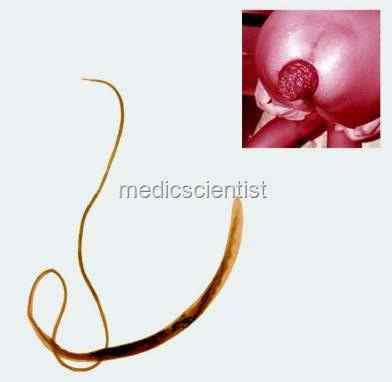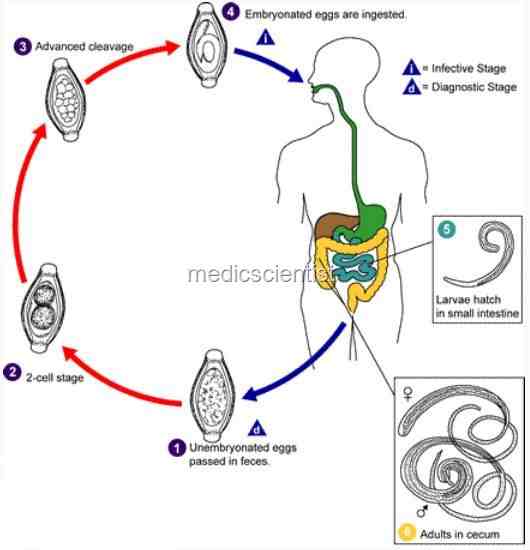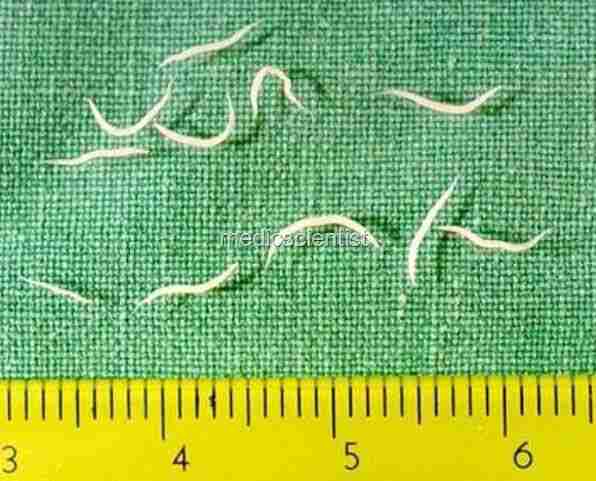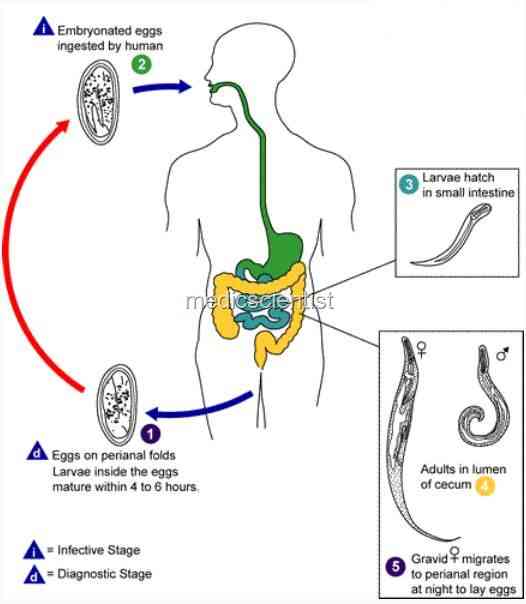TRICHURIS TRICHURA (WHIP WORM) ,ENTEROBIUS VERMICULARIS
- (PIN WORM OR THREAD WORM) Diagnosis and Treatment
- TRICHURIS TRICHURA (WHIP WORM) It is found worldwide.
- Two of the most common nematode infections worldwide are pinworm, which is caused by Enterobius vermicularis, and whipworm, which is caused by Trichuris trichiura
 |
| Trichuris Trichura Whip Worm |
Infective stage Trichuris Trichura Whip Worm
- Eating food that has been touched by soiled hands can also spread the infection.
- Spread within families is common
- Transmission occurs via direct anus to mouth spread from contact with an infected person
- or via airborne eggs that are dislodged from contaminated clothing or bed linen.
- is the egg.
- Route of infection is oral. The worm resides in cecum and colon.
- Adult worm size is 3-5 em. Incubation period is 50 – 100 days.
- Chief symptoms are gastrointestinal disturbances and anaemia.
 |
| Trichuris Trichura Whip Worm Life cycle |
Diagnosis Trichuris Trichura Whip Worm
- The diagnosis of enterobiasis is best made using a “scotch tape” test.
- Since worms and eggs are not passed in stool, there is no need to perform a fecal examination.
- • By eggs in stools.
- Enterobiasis does not usually cause a peripheral eosinophilia since there generally is no tissue invasion.
Treatment of Trichuris Trichura Whip Worm
- Mebendazole and Albendazole.
 |
| Enterobius Vermicularis Pin Worm |
- It is found worldwide. Infective stage is egg. Route of infection is oral.
- The species commonly known as “pinworms” that causes enterobiasis, an infestation of the large intestine.
- The adult worms live in the cecum and adjacent portions of the colon; the females migrate to the anus and lay their eggs on the perianal skin.
- Gastrointestinal location of worm is cecum and appendix.
- Infestations cause irritation of the anal region and allergic reaction of the neighboring skin, accompanied by intense itching, which may result in loss of sleep, excessive irritability, and a secondary infection of the area around the anus as a result of the scratching.
- Distribution is worldwide.
- It is estimated that in temperate climates 20% of children have this condition. Female worms average 8 to 13 mm in length and males 2 to 5 mm
- Adult worm size is 1 em. Incubation period is 35 – 45 days. There is perianal itching. Diagnosis
- · By eggs from perianal skin collected on a cello tape.
- The presence of adult worms in feces or on the anus confirms the diagnosis
 |
| Enterobius Vermicularis Pin Worm Life cycle |
Treatment of Enterobius Vermicularis Pin Worm
- Mebendazole,
- Pyrantel pamoate,
- Albendazole.

